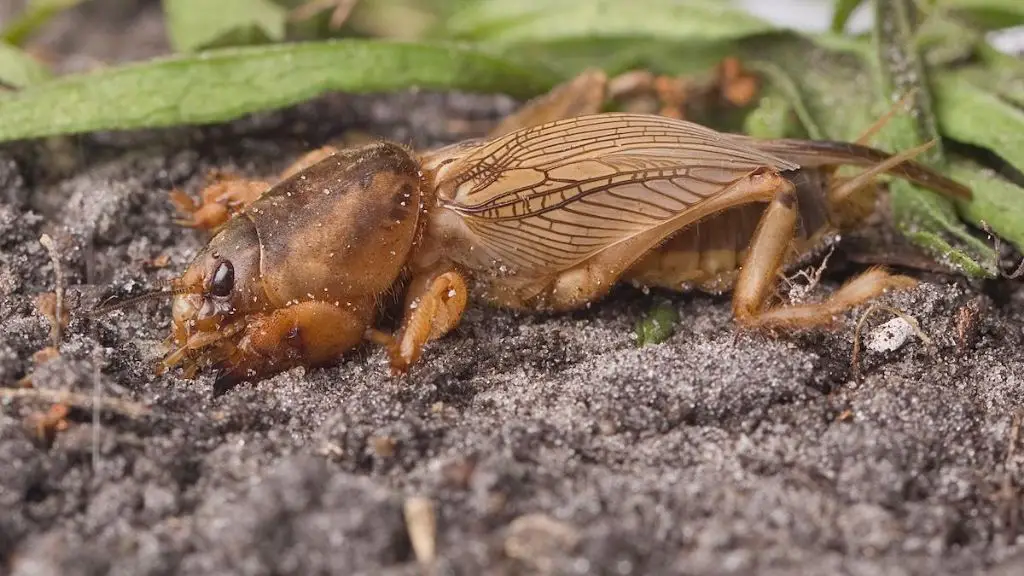Mole crickets are burrowing insects that can cause significant damage to lawns, gardens, pastures, and turfgrass. As their name suggests, they construct underground tunnels and mounds similar to moles. However, unlike moles, mole crickets feed on the roots and stems of plants. Their tunneling and feeding activities can quickly destroy grass, flowers, vegetables, and other plants. If you have noticed dying patches of grass or plants wilting without explanation, mole crickets may be the culprit. Determining the best way to get rid of mole crickets requires understanding the mole cricket lifecycle, signs of infestation, and control options. In this article, we will explore the most effective methods and products for controlling mole crickets.
Page Contents
Mole Cricket Lifecycle
There are four main species of mole crickets in the United States:
- Northern mole cricket
- Southern mole cricket
- Tawny mole cricket
- Short-winged mole cricket
While each species has slightly different behaviors and characteristics, their lifecycles are generally similar.
Eggs
In spring, adult mole crickets emerge from their underground burrows. Females lay 50 to 200 eggs in chambers about 2-6 inches below the soil surface. The eggs hatch in 2 to 6 weeks.
Nymphs
The nymphs that hatch resemble tiny adults but lack fully developed wings. They immediately begin feeding on grass roots and tunneling through the soil. Nymphs molt through 8-10 instars over 2-3 months before reaching adulthood.
Adults
Adult mole crickets are light brown, cylindrically shaped, and 1 to 1.25 inches long. Their front legs are modified for digging and tunneling. Males have short forewings while females have only tiny wing stubs. In late summer, adults mate and females lay eggs to start the cycle again. Adults continue feeding and tunneling until the first hard frost. They overwinter as adults or large nymphs deep in the soil profile. There is one generation per year in northern regions and two generations per year in southern areas.
Signs of Mole Cricket Infestation
Detecting the presence of mole crickets is the first step in controlling them. Signs of mole cricket damage include:
- Dead, dying grass in irregular patches
- Tunnels and mounds in lawn or garden areas
- Plants wilting despite adequate water
- Roots of grass plants chewed off
- Hollowed out stems of seedlings
- Soft soil due to extensive tunneling
- Adult mole crickets visible on the soil surface at night
Carefully inspect the roots and crowns of distressed plants for signs of feeding damage. At night, use a flashlight to spot adult mole crickets running on top of the soil. Their tunneled mounds may resemble ant hills when fresh. Disturbed areas of lawn can also indicate their subsurface activity. Catching mole crickets in the act confirms they are the culprits.
Mole Cricket Control Options
A variety of products and techniques can be used to control mole crickets. The best approach combines multiple tactics aimed at different mole cricket life stages.
Cultural Control
Cultural practices that encourage healthy turfgrass and plants can help reduce mole cricket damage:
- Maintain proper mowing height for grass type
- Water infrequently but deeply to encourage deep root growth
- Reduce soil compaction through aeration
- Use less fertilizer to minimize succulent new growth
- Mix grass varieties to limit food options for mole crickets
While cultural control alone rarely eliminates mole crickets, it can make lawns and plants less appealing targets.
Biological Control
Natural enemies that prey on mole crickets can be introduced or protected:
- Steinernema scapterisci nematodes seek out and kill nymphs in soil.
- Larra wasps sting and paralyze adults and nymphs to feed their larvae.
- Beauveria bassiana fungus infects mole crickets through the skin.
- Avoid using broad spectrum insecticides that kill beneficials like steinernemas and larra wasps.
Products containing these biological controls work best when populations are low to moderate. They require specific moisture and temperature conditions to function.
Chemical Control
Insecticide applications provide the fastest knockdown of high mole cricket populations:
- Bifenthrin targets adult and nymph mole crickets.
- Imidacloprid and clothianidin insecticides kill nymphs but not adults.
- Carbaryl works against adults and nymphs.
- Apply as sprays or granules per label directions when active infestations are seen.
Insecticides also eliminate natural mole cricket predators. Use biologicals first if populations are low. Alternate insecticide classes each application to prevent resistance.
Combination Approach
A combined strategy over two seasons provides the best long-term control:
- Improve lawn or garden health through cultural practices.
- Introduce steinernema nematodes in early summer to kill nymphs.
- Spot treat adults with carbaryl in late summer if needed.
- Continue cultural care and add nematodes the following season.
- Avoid overuse of insecticides that interfere with biological controls.
This integrated pest management (IPM) strategy minimizes damage while reducing environmental impact. Preventative cultural care and biological control avoid the broad use of insecticides.
Conclusion
Mole crickets thrive in areas with sandy soils and plenty of grass roots or plant stems to feed on. Home lawns, pastures, golf courses, and parks provide ideal habitat. While their tunneling damages turfgrass and landscapes, a targeted IPM approach can effectively suppress populations. Begin mole cricket control by improving plant health through proper cultural practices. Then introduce biological agents like beneficial nematodes to kill nymphs. Spot treat with insecticides if necessary when adults reach damaging levels. Avoid overreliance on insecticides alone so natural enemies persist. Repeating this combination of cultural, biological, and chemical tactics over two seasons will provide long-term, sustainable mole cricket control.
